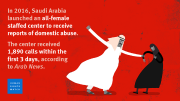Bilqis Abdul-Qaadir has been playing basketball for 22 years. The former Division 1 NCAA player holds the scoring record by a high school player in her home state of Massachusetts. Her intensity and focus have helped her through life. And she has needed those attributes after being hurt by a rule that stops basketball players across the world from thriving. Rule 4.2.2. of basketball’s governing body, Fiba, states that “players shall not wear equipment (objects) that may cause injury to other players.”
Abdul-Qaadir is currently working as an educator and athletic director of an Islamic school in Memphis. Because of the hijab ban, she has not had the chance of fulfilling her dream of playing professional basketball. The NCAA does not have a hijab ban, so Abdul-Qaadir had no problem playing during college. After that is when her problems began. The lack of urgency in challenging the process, and not being able to play, has been difficult to endure. She is not alone.
Indira Kaljo is a 27-year-old Bosnian-American player working as a basketball coach and teacher. She is president and founder of Global Active, a non-profit organization that empowers Muslim girls in sports and healthy lifestyles. She is committed to fighting the Fiba ban. Kaljo decided to wear a hijab after she had played overseas in Ireland and then in Bosnia. She wanted to continue at an elite level but the ban prevented her from playing for Fiba-sanctioned teams while wearing a hijab.
For more than two years, she has lobbied Fiba with the #FIBAAllowHijab hashhag pounding through social media. Kaljo organized 24 other basketball players and supporters from around the world and started a successful Change.org campaign. Their petition garnered more than 130,000 signatures worldwide. They submitted the petition to Horacio Muratore, the president of Fiba. I asked Kaljo about the most difficult part of the ban. “Having to retire from the professional play before I was ready to retire myself.”
Kaljo’s determination has united women and mobilized other Muslim players to get involved in the cause and push for a positive outcome. Asma Elbadawi is a Sudanese-British player who lives in Bradford and works in international development. Basketball is one of the tools she uses to teach young children and adults skills that they can translate into their workplace, school and home life. Elbadawi believes that a hijab ban could deter young women from the sport. “It never helped that as young girls, we did not see a single Muslim veiled women in the WNBA, or other sports,” she tells me. “Not seeing people who look like us playing basketball meant it was not ingrained in our conscious that we, too, can compete. It is important now more than ever for Muslim women to be visible and diverse and integrate as much as possible.”
The governing body of basketball is set to make a final decision this week on the head-covering ban. They have already postponed this decision from a meeting in September 2016.
The ban seems all the more ridiculous because there is no record of a basketball player being injured by a hijab, yarmulke or a turban during play, anywhere in the world. Conversely, uncovered long hair could be considered an issue. “I have been whipped with braids and pony tails in the face a few times,” Elbadawi says, laughing. There are also special designs for hijabs that meet the safety standards of other major international sports organization such as Fifa, which formally rescinded its ban in 2014.
As someone who lost precious years of play because of a hijab ban, I can only conclude that the reason for its existence was not born from sincere concern, but rather an apathy towards Muslim women in general. Fiba claims there is no “religious connotation” or form of discrimination on their part – even though the only players to be directly affected by this ban would be Muslim women, Sikh men who wear a turban, and Jewish men who wear a yarmulke.
There have been some signs of pushback from Fiba. In September 2014, it implemented a provisional period that allows hijabs in certain circumstances. They are permitted in 3-on-3 tournaments, and allows national federations to apply for exceptions for players who choose to wear hijab. Indonesian player Raisa Aribatul Hamidah was the first woman in hijab to participate in a Fiba-sanctioned 3-on-3 world championship tournament. With support from Kaljo and other activists, the Turkish Basketball Federation (TBF) decided to overturn the ban in their own domestic leagues in September 2016. But it has not been smooth sailing.
Days after the trial period was announced, the Qatari women’s basketball teamwalked off the court in frustration at the 2014 Asian Games in South Korea after they were banned from wearing hijabs.
If Fiba lifts its ban, it would help to elevate the game and reinforce the fact that there is space for every woman in basketball.
For Elbadawi, Kaljo and Abdul-Qaadir, the possibility that Fiba may choose to continue with a policy that prevents thousands of people from playing basketball is potentially devastating. But basketball has helped them to cope with adversity.
“[Basketball] teaches you resilience; and learning resilience is what I ultimately take from the game,” Abdul-Qaadir says. “Learning how to bounce back from a bad play or a loss directly relates to life’s lessons. How to turn a negative into a positive – no matter which way the ball bounces.”
Source: theguardian.com



Be the first to comment at "Hijab ban in Basketball. Will they lift it?"